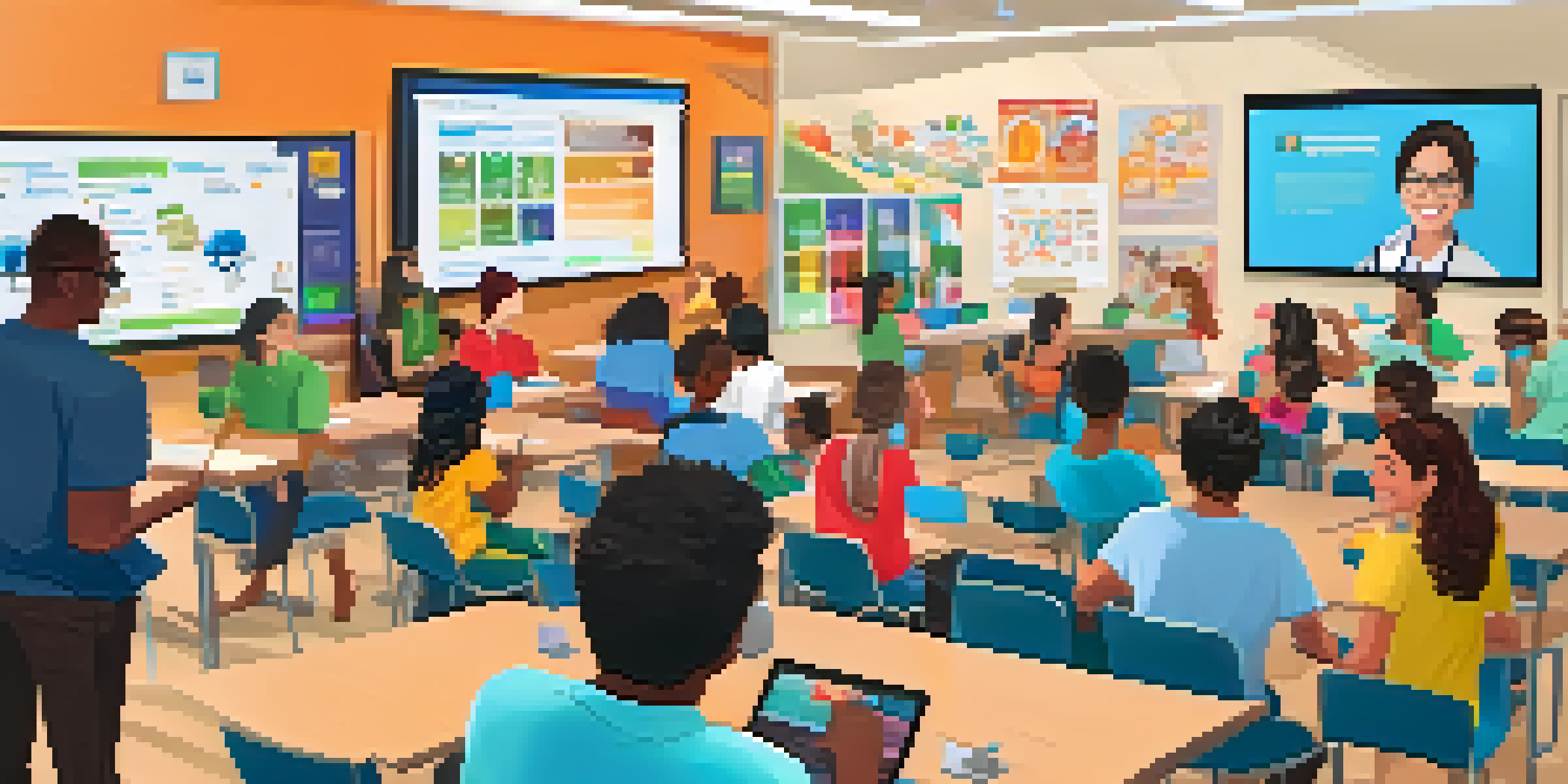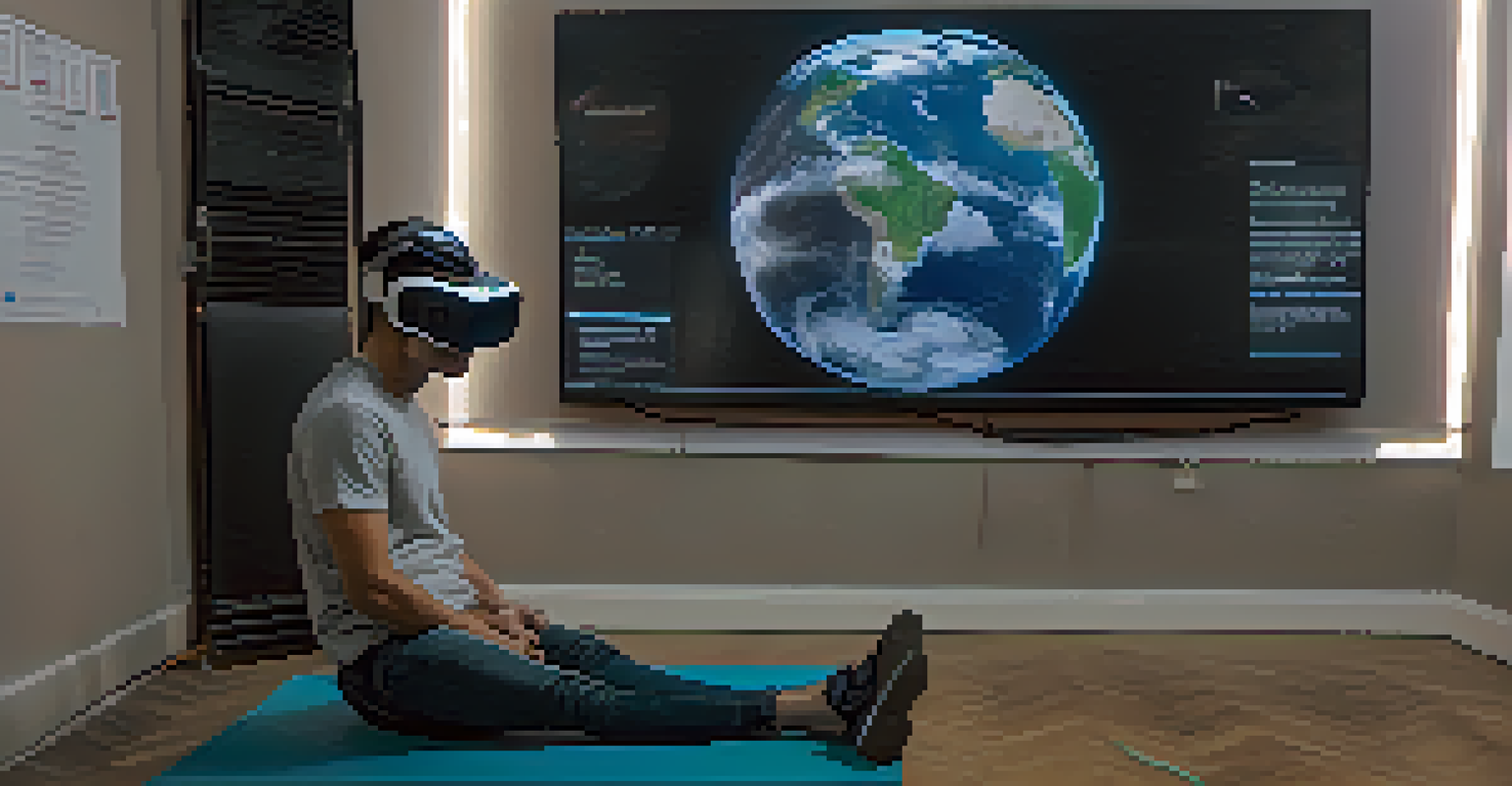The Role of Technology in Public Health Education Today

The Evolution of Public Health Education through Technology
Public health education has undergone a significant transformation over the years, largely due to technological advancements. In the past, information was disseminated through pamphlets and community meetings, often reaching only a limited audience. Today, with the rise of digital platforms, educational resources can be shared instantly with a global audience, ensuring that vital health information is accessible to everyone.
The greatest wealth is health.
This shift has allowed for a more dynamic approach to education. Interactive online courses, webinars, and social media campaigns engage individuals in ways that traditional methods couldn't. For example, platforms like YouTube and Instagram have become valuable tools for health professionals to share knowledge and raise awareness about various health issues.
Moreover, technology enables the use of data analytics to tailor educational content to specific demographics. By analyzing trends and preferences, health educators can create targeted campaigns that resonate more effectively with their audience, enhancing the overall impact of public health education.
Mobile Health Apps: Empowering Individuals
Mobile health apps are revolutionizing the way individuals manage their health and access educational resources. These apps provide users with personalized information right at their fingertips, whether it's reminders for medication or tips for maintaining a healthy lifestyle. Such accessibility empowers individuals to take charge of their own health, making informed decisions based on real-time data.

For instance, applications like MyFitnessPal not only track diet and exercise but also offer educational articles that help users understand the importance of nutrition. This blend of functionality and education fosters a proactive approach to health management, encouraging users to adopt healthier habits.
Tech Transforms Health Education
Technological advancements have revolutionized public health education, making information more accessible and engaging through digital platforms.
Additionally, many health apps have built-in community features that allow users to connect with others facing similar health challenges. This sense of community provides support and motivation, which can enhance the effectiveness of health education efforts.
The Role of Social Media in Health Awareness
Social media platforms have become powerful tools for public health education, serving as channels for disseminating information quickly and widely. Campaigns that go viral can reach millions in a matter of hours, spreading vital health messages that might otherwise go unnoticed. This immediacy is particularly crucial during public health emergencies, such as disease outbreaks.
Technology is best when it brings people together.
For example, during the COVID-19 pandemic, platforms like Twitter and Facebook played essential roles in sharing accurate information about safety measures and vaccination programs. Public health organizations utilized these platforms to debunk myths and combat misinformation, ensuring that reliable information was readily available.
Moreover, social media allows for two-way communication between health educators and the public. This interaction can foster trust and engagement, as individuals feel heard and valued, ultimately leading to a more informed population.
Telehealth: Bridging Gaps in Access to Care
Telehealth has emerged as a vital component of public health education, especially for those in underserved communities. By providing remote access to healthcare professionals, telehealth services eliminate barriers such as transportation and geographical limitations, making health education and care more accessible. This is particularly important for individuals who may not have easy access to local healthcare facilities.
For instance, virtual consultations can include educational components, where healthcare providers share resources and information tailored to the patient's needs. This personalized approach enhances understanding and encourages patients to engage with their health proactively.
Mobile Apps Empower Personal Health
Mobile health apps provide personalized resources and community support, enabling individuals to take control of their health management.
Furthermore, telehealth platforms often incorporate educational materials and tools that patients can use independently. This self-directed learning empowers individuals to continue their education beyond the consultation, promoting long-term health management.
Data-Driven Insights for Tailored Health Education
The use of data analytics in public health education allows for more tailored approaches to health communication. By analyzing demographic data, health trends, and user engagement, educators can craft messages that resonate with specific populations. This targeted strategy ensures that the right information reaches the right people at the right time.
For example, data can reveal health disparities within communities, guiding the development of focused educational campaigns that address specific needs. If a community shows a high prevalence of diabetes, targeted workshops can be organized to provide relevant resources and strategies for management and prevention.
Moreover, feedback loops from these campaigns can continuously inform future educational efforts. By assessing the effectiveness of previous initiatives, public health educators can refine their strategies, making them more impactful over time.
Virtual Reality: An Innovative Learning Tool
Virtual reality (VR) is emerging as an innovative educational tool in public health. By creating immersive experiences, VR can simulate real-life health scenarios that enhance learning and retention. For instance, VR can be used to train healthcare professionals in emergency response techniques or educate the public about the impacts of certain health behaviors.
This technology allows users to engage with health education in a way that feels more tangible and relatable. Imagine a VR experience that places users in a setting where they can witness the effects of smoking on lung health firsthand. Such impactful experiences can lead to greater understanding and motivation to change unhealthy behaviors.
Social Media Boosts Health Awareness
Social media serves as a powerful tool for rapidly spreading health information and fostering two-way communication between educators and the public.
Furthermore, VR can be particularly beneficial in reaching younger audiences who may be more inclined to engage with interactive technology. By capturing their interest, public health educators can instill important health messages that resonate with the next generation.
Challenges and Ethical Considerations in Digital Health Education
While technology has greatly enhanced public health education, it also presents challenges and ethical considerations that must be addressed. Privacy and security of personal health information are paramount, especially as more individuals turn to digital platforms for health management. Educators and organizations must prioritize safeguarding user data to maintain trust and encourage engagement.
Additionally, the digital divide remains a significant issue. Not everyone has equal access to technology or the internet, which can exacerbate existing health disparities. Public health initiatives must strive to ensure that all communities have access to digital resources and education, bridging gaps rather than widening them.

Lastly, the accuracy of information is critical in the digital landscape. Misinformation can spread quickly online, leading to harmful consequences. Public health educators must be vigilant in providing evidence-based information and addressing false claims to promote a well-informed public.